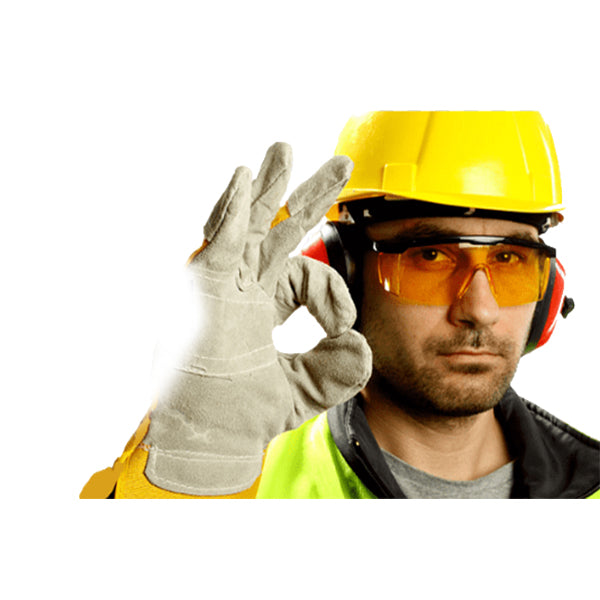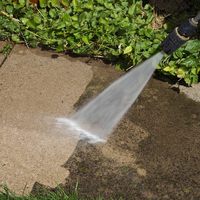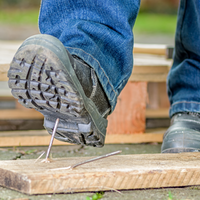Eye protection?
Eye protection is a type of (safety) personal protective equipment (PPE) helped in preventing injury to the eye. The eyes are one of the most principal organs as well as exposed parts of human body. Eyes are easily injured by many things such as small particles, chemicals, biological agents, strong visible light and non-visible rays. Eyes should be protected by using appropriate eye protection.
face shield glasses
Shop eye protection products and eyewear from the largest Personal Protective Equipment (PPE) online merchant in Nigeria. Eye protection glasses and goggles shield your eyes from dust, debris, and splashes to help avoid injuries. Protective eyewear maintains visibility while providing eye protection in applications such as lab work, health care, facility maintenance, machining and grinding, and woodworking. Safety glasses keep out most airborne debris while allowing air to circulate around your eyes to minimize fogging. Safety goggles strap aro und your head to stay in place and fit snugly against your face for increased protection against splashes. Industries safety Nigeria expands its category on Eye safety protection, which are Glasses, safety Foam Lined, Over The Glass, Magnifier glasses, safety Goggles, safety Lens Cleaners, eye protection Accessories. Buy Splash Goggles, Face Shields, Specialty Eyewear, Prescription Safety Eyewear online at the lowest prices. Protective Eyewear is indispensable in every workplace. Protect your eyes from flying debris, chemicals, and other dangerous hazards with safety glasses and safety goggles from Safety Nigeria. We have a vast collection of protective eyewear designed for a variety of tasks from light-duty lab work to heavy-duty welding jobs. Choose from a variety of eye protection products manufactured by the most trusted brands in safety. You will always find the highest quality of eye safety protection at Safety Nigeria online with our variety of styles including glasses, goggles, visitor, lightweight, sealed, nickel-free, polarised & more. We stock eye protection products from top-notch brands you trust like Bolle, Blue Rapta, 3M, MSA, and Uvex. Shop 3M eye wears, Vaultex eye wears, Uvex eye wears, MSA eye wears, etc. Safety Nigeria can provide timely shipments from our conveniently located warehouses across the country. Browse our large collection of Eye Protection Equipment and place your orders now.
Selecting the most suitable eye and face protection should take into consideration the following elements:
- Ability to protect against specific workplace hazards
- Should fit properly and be reasonably comfortable to wear
- Should provide unrestricted vision and movement
- Should be durable and cleanable
- Should allow unrestricted functioning of any other required PPE
Protective eye and face wear must comply with the American National Standards Institute (ANSI) standard Z87.1-1989 or later.
What Types of Eye and Face Protection Are Available?
Some of the most common types of eye and face protection include:
| Safety Glasses | Safety glasses have safety frames constructed of metal or plastic and impact-resistant lenses. Side protection is required. Must comply with ANSI standard Z87.1 |
| Chemical Splash Goggles | Tight fitting eye protection that completely covers the eyes, eye sockets and facial area surrounding the eyes. Provides protection from impact, dust and splashes. Must comply with ANSI standard Z87.1 |
| Dust Goggles | Dust goggles, sometimes called direct ventilated goggles, are tight fitting eye protection designed to resist the passage of large particles into the goggles. Must comply with ANSI standard Z87.1 |
| Fluid Resistant Shields | These shields are fluid resistant or impervious and provide splash protection from biological material, such as human or non-human primate body fluids. These shields do not provide protection against chemicals or impact hazards and do not comply with ANSI Z87.1 |
| Face Shields | These shields extend from the eyebrows to below the chin and across the width of the employee’s head. Face shields protect against potential splashes or sprays of hazardous liquids. When worn for protection against UV, must be specifically designed to protect the face and eyes from hazardous radiation. When used for chemical protection or UV protection, must comply with ANSI standard Z87.1. |
| Laser Eyewear | Protective eyewear is required for Class 3 and 4 laser use where irradiation of the eye is possible. Such eyewear should be used only at the wavelength and energy/power for which it is intended. Contact the Laser Safety Officer at x6271 for information. |
| Welding Shields | Constructed of vulcanized fiber or fiberglass and fitted with a filtered lens, welding shields protect eyes from burns caused by infrared or intense radiant light; they also protect both the eyes and the face from flying sparks, metal splatter and slag chips produced during welding, brazing, soldering and cutting operations. For more information, see the OSHA Eye Protection During Welding Fact Sheet(link is external). |
What Type of Eye Protection Should I Wear for Various Hazards?
| Chemicals | Hazardous* dry chemicals and small amounts of hazardous liquid chemicals | Safety glasses | Eye protection is required when working with chemicals on the bench or in a fume hood |
| Hazardous* chemicals that pose a splash hazard | Chemical splash goggles | ||
| Cryogenic liquids | Chemical splash goggles and a face shield | ||
| Highly reactive or explosive materials | Chemical splash goggles and a face shield | Blast shield recommended | |
| Pyrophoric solids or liquids | Chemicals splash goggles | ||
| Biological Material | Potentially infectious materials, including BSL2 microorganisms and viruses, human and non-human primate material, outside of a biosafety cabinet | Safety glasses plus mask or face shield | Eye protection is typically not required when working in a biosafety cabinet, except if other hazardous materials are being handled in the lab. Eye protection may be needed when removing items from the biosafety cabinet. |
| Radiation | Unsealed radioactive materials, liquid or powder | Safety glasses | |
| Lasers | Eyewear is dependent on wavelength and energy/power of laser | Contact Laser Safety Officer at 8-6271 | |
| Open ultraviolet light source | Face shield with UV protection | ||
| Infrared emitting equipment | Shaded goggles | ||
| Machining and Physical Hazards | Soldering, spatter of flux or hot metal | Safety glasses or chemical splash goggles | |
| Furnaces, molten metal or glass, heat, sparks, glare | Dust goggles, reflectivce face shield | ||
| Chips, particles, dust, glass shards | Safety glasses | ||
| Glassware under pressure | Safety glasses or chemical splash goggles | ||
| Cutting/connecting glass tubing | Safety glasses | ||
| Welding and brazing operations | See OSHA Factsheet - Eye Protection During Welding(link is external) | ||
| Changing out compressed gas cylinders, affixing regulator to cylinder | Safety glasses | ||
| Use of compressed air for cleaning equipment | Dust goggles | Use of compressed air for personal cleaning is prohibited |
*Hazardous chemicals pose a wide range of health hazards (such as irritation, sensitization, and carcinogenicity) and physical hazards (such as flammability, corrosion, and reactivity).
Are Contact Lenses Permissible to Wear in Hazardous Environments?
Studies have shown that contact lenses are safe to wear in most hazardous environments. However, they do not offer any eye protection. If an exposure to a hazardous substance occurs while wearing contact lenses, remove the lens immediately while rinsing the eye(s). Contact lenses that have been contaminated with a chemical must be discarded.
What Options Are Available for Eye Protection if I Wear Prescription Glasses?
Most prescription glasses do not meet the ANSI Z87.1 requirements for eye and face protection. If you wear corrective glasses, you can purchase safety glasses that are designed to be worn over your eyeglasses or you can purchase ANSI-rated prescription safety glasses at a discounted price through the Princeton University Safety Eyewear Program.
3M Safety Glasses
Three main types of eye protection exist, each with advantages and disadvantages. They are safety glasses, goggles, and face shields.
- Safety Glasses: Safety glasses have safety frames constructed of metal or plastic and impact-resistant lenses. Side protection is required. Safety glasses have shatter-resistant lenses made of materials like polycarbonate or propionate plastic with side shields. They are designed to prevent large, physical objects such as wood chips from injuring your eyes. They are also used to provide laser light filtration and prevent reflections from the laser entering the eye and causing retinal burns. Safety glasses provide little to no protection from liquids or vapors. Safety glasses can be purchased with prescription lenses and even bifocals.
- Goggles: Goggles may be vented or non-vented.
- Non-vented goggles protect eyes from vapors, mists, fumes, or other hazards eyes must be completely covered, but the material hazard does not require covering all exposed skin.
- Vented goggles protect from moderated quantities of liquids with no vapor or mist danger. Several types exist. For example, the common, hardware-store goggle has holes drilled into the plastic. This is unsuitable for laboratory work because liquids can get through the holes. Vented laboratory goggles have a series of buttons embedded into the plastic. These buttons house a baffle plate that allows air to pass but present a physical barrier to liquids.
- Face Shield: Face shields are not stand-alone eye protection. They protect the entire face with goggles on under the shield to catch any liquids that might have made it past the shield.
What type of eye protection should I wear for various hazards?
|
Chemicals |
Hazardous* dry chemicals and small amounts of hazardous liquid chemicals |
Safety glasses |
Eye protection is required when working with chemicals on the bench or in a fume hood |
|
|
Hazardous* chemicals that pose a splash hazard |
Chemical splash goggles |
|
|
|
Cryogenic liquids |
Chemical splash goggles and a face shield |
|
|
|
Highly reactive or explosive materials |
Chemical splash goggles and a face shield |
Blast shield recommended |
|
|
Pyrophoric solids or liquids |
Chemicals splash goggles |
|
|
Biological Material |
Potentially infectious materials, including BSL2 microorganisms and viruses, human and non-human primate material, outside of a biosafety cabinet |
Safety glasses plus mask or face shield |
Eye protection is typically not required when working in a biosafety cabinet, except if other hazardous materials are being handled in the lab. Eye protection may be needed when removing items from the biosafety cabinet. |
|
Radiation |
Unsealed radioactive materials, liquid or powder |
Safety glasses |
|
|
|
Lasers |
Eyewear is dependent on wavelength and energy/power of laser |
Contact Laser Safety Officer at 8-6271 |
|
|
Open ultraviolet light source |
Face shield with UV protection |
|
|
|
Infrared emitting equipment |
Shaded goggles |
|
|
Machining and Physical Hazards |
Soldering, spatter of flux or hot metal |
Safety glasses or chemical splash goggles |
|
|
|
Furnaces, molten metal or glass, heat, sparks, glare |
Dust goggles, reflectivce face shield |
|
|
|
Chips, particles, dust, glass shards |
Safety glasses |
|
|
|
Glassware under pressure |
Safety glasses or chemical splash goggles |
|
|
|
Cutting/connecting glass tubing |
Safety glasses |
|
|
|
|
|
|
|
Changing out compressed gas cylinders, affixing regulator to cylinder |
Safety glasses |
|
|
|
|
Use of compressed air for cleaning equipment |
Dust goggles |
Use of compressed air for personal cleaning is prohibited |
Factors in the workplace that increase the risk of eye injury may include:
- The employer doesn’t supply any eye protection.
- The employer supplies eye protection, but workers won’t wear it.
- The employer doesn’t enforce the use of eye protection or train the workers in how to use protection equipment.
- Neither the employer nor the workers appreciate the potential for injury and don’t think to use eye protection.
- The eye protection is inadequate, such as the use of glasses when the job requires a face shield.

















